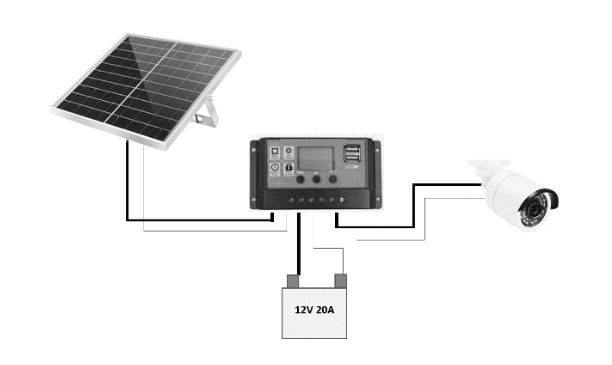Reporters: Mr.Konto Pantongkam, Asst.Dr.Pituk Bunnoon, Asst.Dr.Phatchakorn Areekul, Mr.Sutaporn Getpun
Evidence Date: January – April 2024
Related SDGs:

Related Indicators: 7.4.1, 7.4.2, 7.4.3, 7.4.4
Details: Supporting details and pictures
RUTS Ratthaphum Campus Develops Solar-Powered CCTV System for Remote Agriculture Using TRIZ Methodology
Mr.Aroonrak Tunpanit, a lecturer at Rajamangala University of Technology Srivijaya (RUTS), Ratthaphum College, and his research team have successfully designed a solar photovoltaic (PV) power generation system for Closed-Circuit Television (CCTV), applying the Theory of Inventive Problem Solving (TRIZ) methodology.
The project focused on a case study involving Mangosteen orchards in Nakhon Si Thammarat Province, targeting 51 local mangosteen farmers as the primary stakeholders.
The research indicated a high demand among farmers for the development of solar-powered CCTV technology in agricultural areas (x=4.40, S.D. = .064). The primary requirement specified that the solar-powered CCTV system must be capable of continuous video recording, both day and night, necessitating sufficient battery reserve power during low light or nighttime hours.
The researchers developed a solar-powered CCTV system utilizing a 12-volt, 10-watt solar cell. Energy storage is managed through a charge controller connected to a 12-volt Lithium battery with a current capacity of no less than 20 ampere-hours (Ah). This configuration enables the CCTV to record both video footage and still images for observation in agricultural areas that are remote from the conventional electrical grid (utility power supply).


Figure 1 RUTS Ratthaphum campus develops solar-powered CCTV system for remote agriculture using TRIZ methodology
The review of existing research and patents on solar-powered CCTV systems established that the application of solar energy systems in Nakhon Si Thammarat Province is highly suitable due to its hot and humid climate. This environment provides sufficient solar irradiance to power the connected CCTV cameras. The system is designed to be controlled via the internet network and the camera’s dedicated application, allowing for real-time viewing and playback of recorded video footage. This functionality is maintained even on days with rainfall or low sunlight, ensuring that evidence can be consistently collected for security purposes. This aligns with the design requirement for a CCTV system that is compact in size, facilitating easy installation and integration with mobile operating systems prior to its final deployment in the mangosteen orchards.
Related Links:
https://so06.tci-thaijo.org/index.php/vrurdistjournal/article/view/263457/179842



